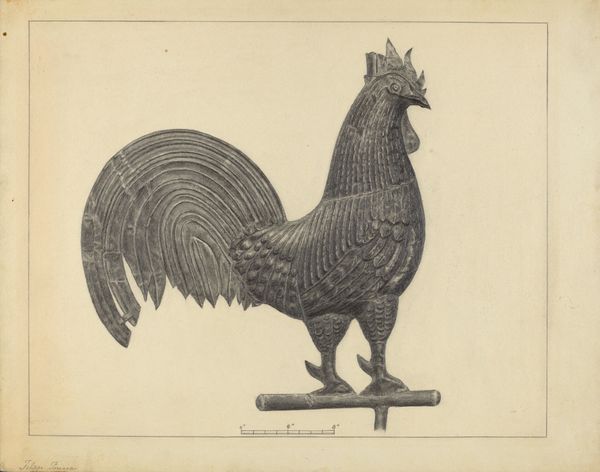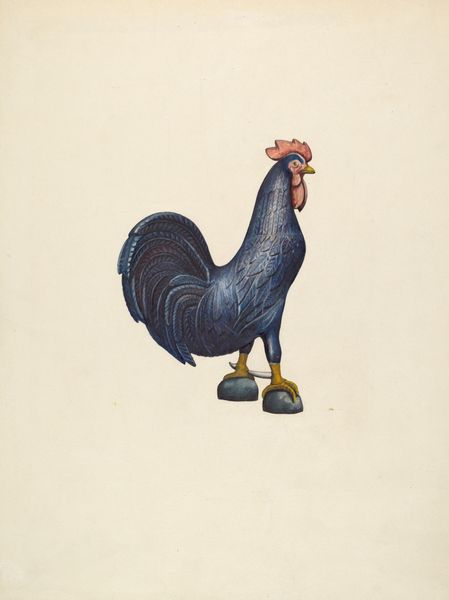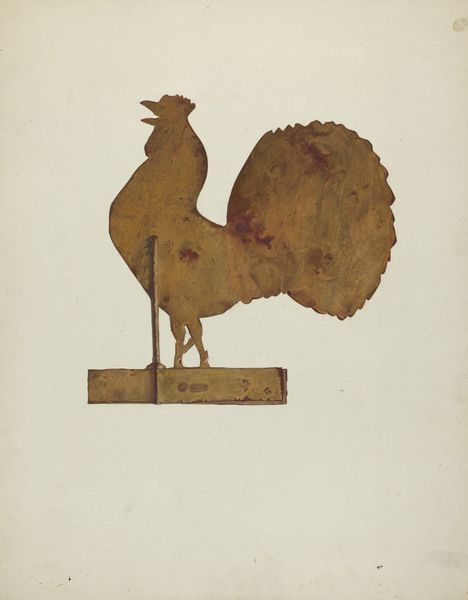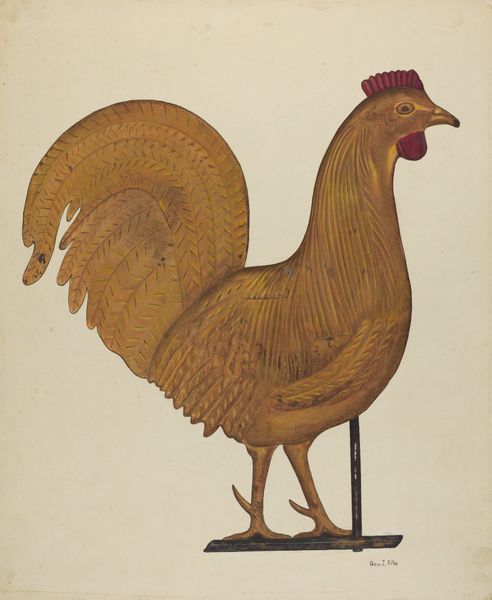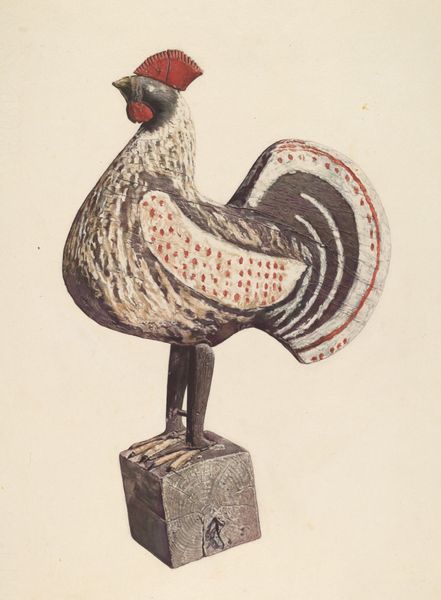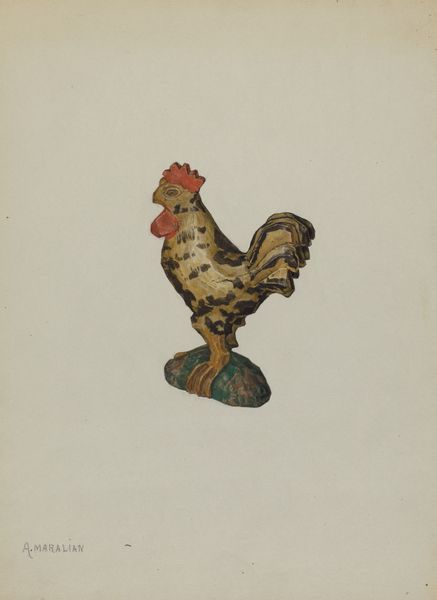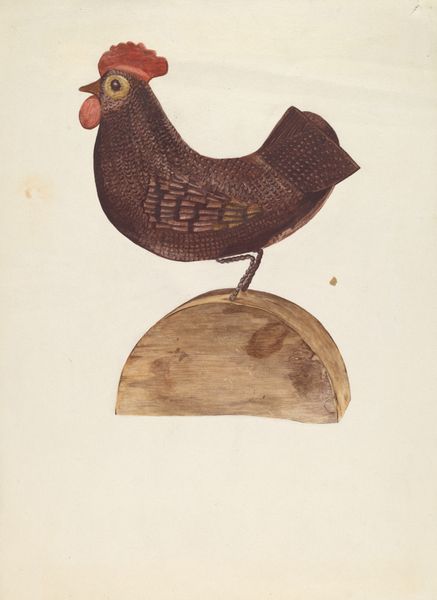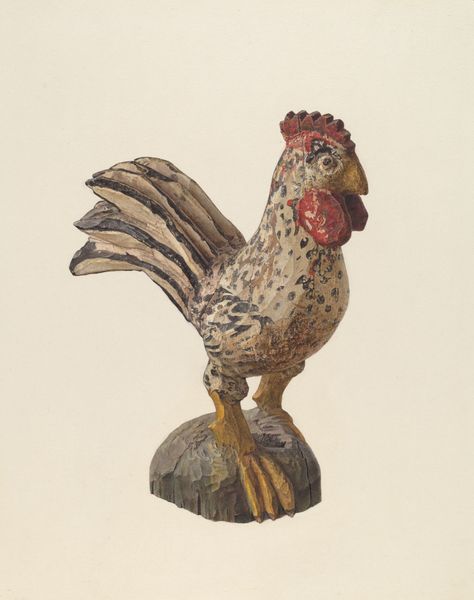
drawing, metal, ink
#
drawing
#
metal
#
ink
#
coloured pencil
#
realism
Dimensions: overall: 34.5 x 45.3 cm (13 9/16 x 17 13/16 in.) Original IAD Object: 22 1/2" wide; 18" high
Copyright: National Gallery of Art: CC0 1.0
Editor: So, this is "Weather Vane," made between 1935 and 1942 by Nicholas Acampora. It looks like ink and colored pencil on metal, a really interesting combination. I'm struck by the rooster's strong, almost stark, silhouette. How do you interpret the visual composition of this piece? Curator: I see a clear dialogue between form and function. The metal weather vane is a functional object, but here, its representation takes precedence. Acampora utilizes the contrast of light and shadow, created by the ink and coloured pencil, to emphasize the rooster's form. Notice the deliberate way he articulates the curves of the tail feathers versus the straight lines of the base. What do these contrasts suggest to you? Editor: I guess it’s playing with ideas of fluidity against rigidity? The rooster’s tail is dynamic, full of implied movement, while the base feels very stable and grounded. The empty space inside the rooster adds another layer. Curator: Precisely. Those negative spaces, pierced within the silhouette, enhance the two-dimensional quality of the image, pushing it away from a purely representational approach. Do you see how the medium contributes to this tension between flatness and depth? Editor: I do. The layering of ink and colored pencil gives it a textured surface, but the subject matter, the weather vane, is itself a flat, constructed object. So the drawing captures that flatness within its own form. Curator: Exactly! The materials underscore the form and the functionality of the real-world object that Acampora portrays. This work is more about form than about the specific context it comes from. It becomes about how the elements relate to each other in this particular representation. Editor: That's a completely different way of viewing it. It is less about what a rooster represents as a symbol but the form itself. Curator: Yes. And how Acampora uses these elements in the drawing is crucial for interpreting its meaning.
Comments
No comments
Be the first to comment and join the conversation on the ultimate creative platform.

